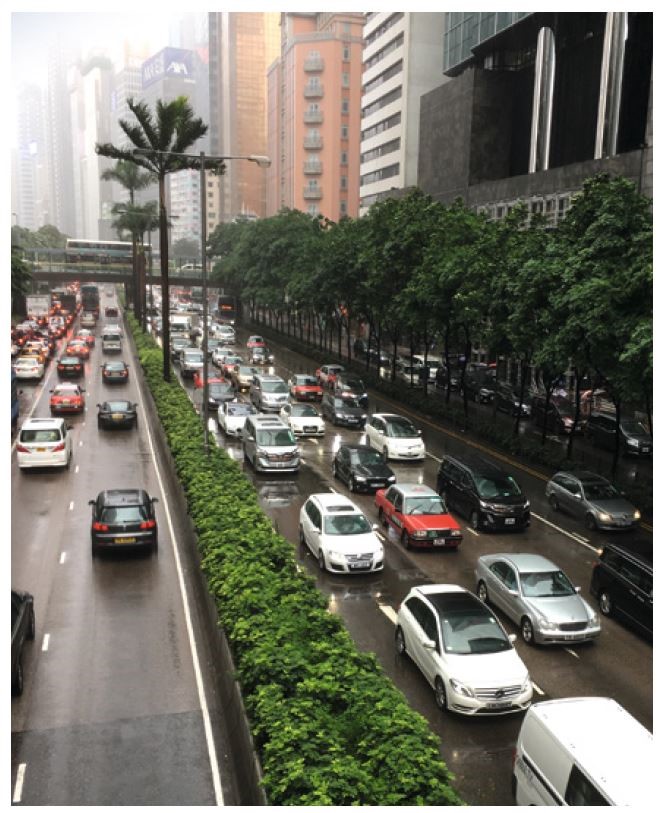
Rain and wet roads
When roads are wet, braking distances increase because tyre grip is reduced. Give yourself much more room for slowing down and stopping.Your allowance for braking distance should be at least doubled.
Water on the roadway makes a slippery film, especially after a spell of dry weather.
Be on the look-out for difference in road surfaces which may reduce the grip of your tyres still more. The smoother your tyres, the greater the increase in braking distance on a wet road.
Pedestrians run the risk of slipping and falling when crossing the road.
See and be seen - You must use headlamps during the day whenever visibility is poor because of heavy rain, smoke, mist or fog or any similar condition.
Not only is your visibility cut down when it rains, it is also more difficult for pedestrians to see you if their views are hampered by umbrellas or headwear.
Rain can be so heavy that it forms a thin sheet of water on the roadway. Even good tyres cannot grip through this and you may have no control at all over steering or braking.
Slow down through pools of water. Water thrown up can block your view, affect your brakes and stop your engine. It may also affect the view of other drivers or drench pedestrians.
Beware of likely serious road flooding when red/black rainstorm warning signal is issued and take extreme care on the roads. If the road is flooded, try to stop in a safe place and find out how deep the water is. If it is not too deep and you decide to drive through, drive as slowly as you can but keep the engine speed up to avoid stalling. As soon as you have driven through a stretch of flooded road, try your brakes but be cautious to do so when there are vehicles behind.

Fog and mist
Slow down and keep a safe distance. You should always be able to stop within the distance of your view ahead.
Do not concentrate on someone else's rear lamps; it gives you a false sense of security.
Watch your speed and remember you may be going much faster than you think. Do not speed up to escape a vehicle which is too close behind you.
If you are driving a heavy vehicle, it may take you longer to stop than the vehicle ahead.
See and be seen - you should use your headlamps or fog lamps, and rear lamps. In fog, use fog lamps if fitted and your windscreen wipers as necessary. Avoid using fog lamps in other circumstances.
Check and clean windscreens, lamps, rear mirrors and windows whenever necessary.
If you have to drive in fog or mist, adjust your speed and allow more time for your trip.
Wind
Keeping control of your vehicle in strong winds, particularly near high-sided vehicles, demands quick and positive reactions.
Look out for fallen trees and other obstructions on the roadway.
Strong winds can blow pedestrians and cyclists off course, so give them plenty of room.
If there is a tropical cyclone near Hong Kong, pay attention to its latest news and forecast track to plan your trip.